A year on from finishing in ninth place and ultimately dropping into the relegation play-offs, this season has seen Daegu FC bounce back from last season’s relegation scare. With the youngest manager at the helm of the youngest team in the division — along with the least valuable team in the division to boot — after 23 games, the side is incredibly placed fifth in K-League 1.
Choi Won-kwon, the manager, was appointed as a caretaker boss last season. Since then, he has been able to develop a game model that suits his players and maximises their strengths. The side have developed into a team exceptionally comfortable without the ball, only conceding 27 goals in 23 games.
This scout report and analysis will take a deep dive into the inner workings of the Daegu defence and provide a tactical analysis of why their defensive tactics and principles make the side particularly difficult to play against.
Daegu’s defensive Strengths
Depending on the opposition, Daegu defensively have switched between either a 5-4-1 or 5-3-2 as well as other variations, but the 5-3-2 is the most common defensively. The side do not look to press the ball aggressively, and many of their games will see them fall into a mid-block reasonably early on.
Nevertheless, the formational structure of the side does not lead to Daegu’s defensive prowess, with this instead being down to the behaviours and roles of the players, particularly in the midfield and the back line.
Generally, it can be said that opposition teams struggle to find any inroads through the centre of the pitch when playing Daegu. This is the case due to one of the centre-backs in the back five advancing into the midfield to cover opposition players positioned between the midfield and the defensive line.
This can be seen in the image below, with Hong Jeong-woon, the right centre-back advancing further forward in order to cover the opposition player. This results in Daegu being able to prevent overloads in the centre, as through Hong advancing, the midfielder Park Se-Jin(number 14) does not have to cover two players potentially.
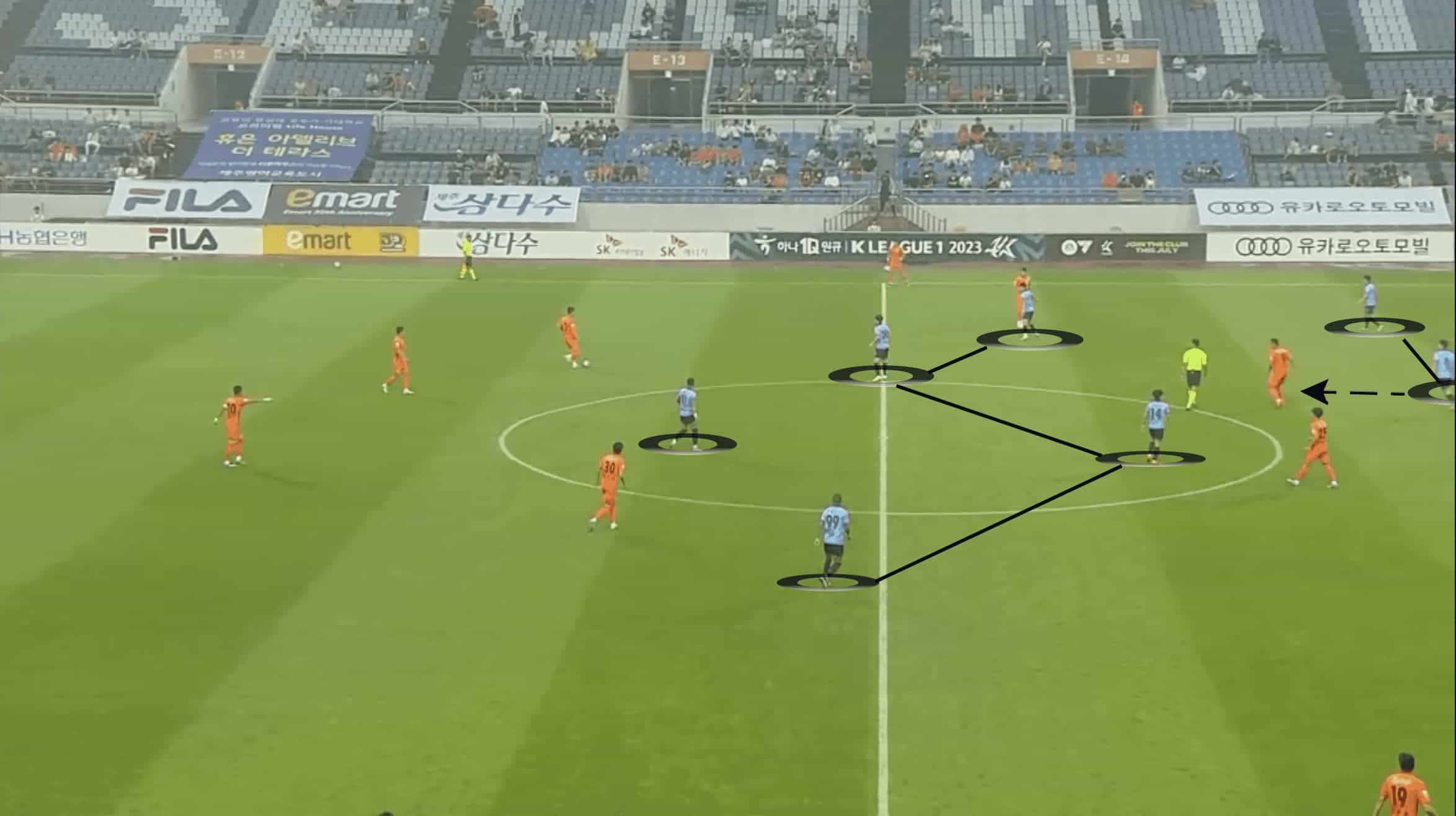
Through the actions of the centre-back in the centre of the pitch, the defensive strategy of Daegu becomes relatively clear, with the side looking to force the opposition wide. This is also made evident through the midfield players pressing opposition players whenever they receive passes in the centre. When doing this, an aspect that aids the side in forcing the opposition wide is the speed and timing of the midfielders when pressing opposition players in the centre. The example below shows how Park, the central-midfieder, begins to press the opposition midfielder before the pass is even played.
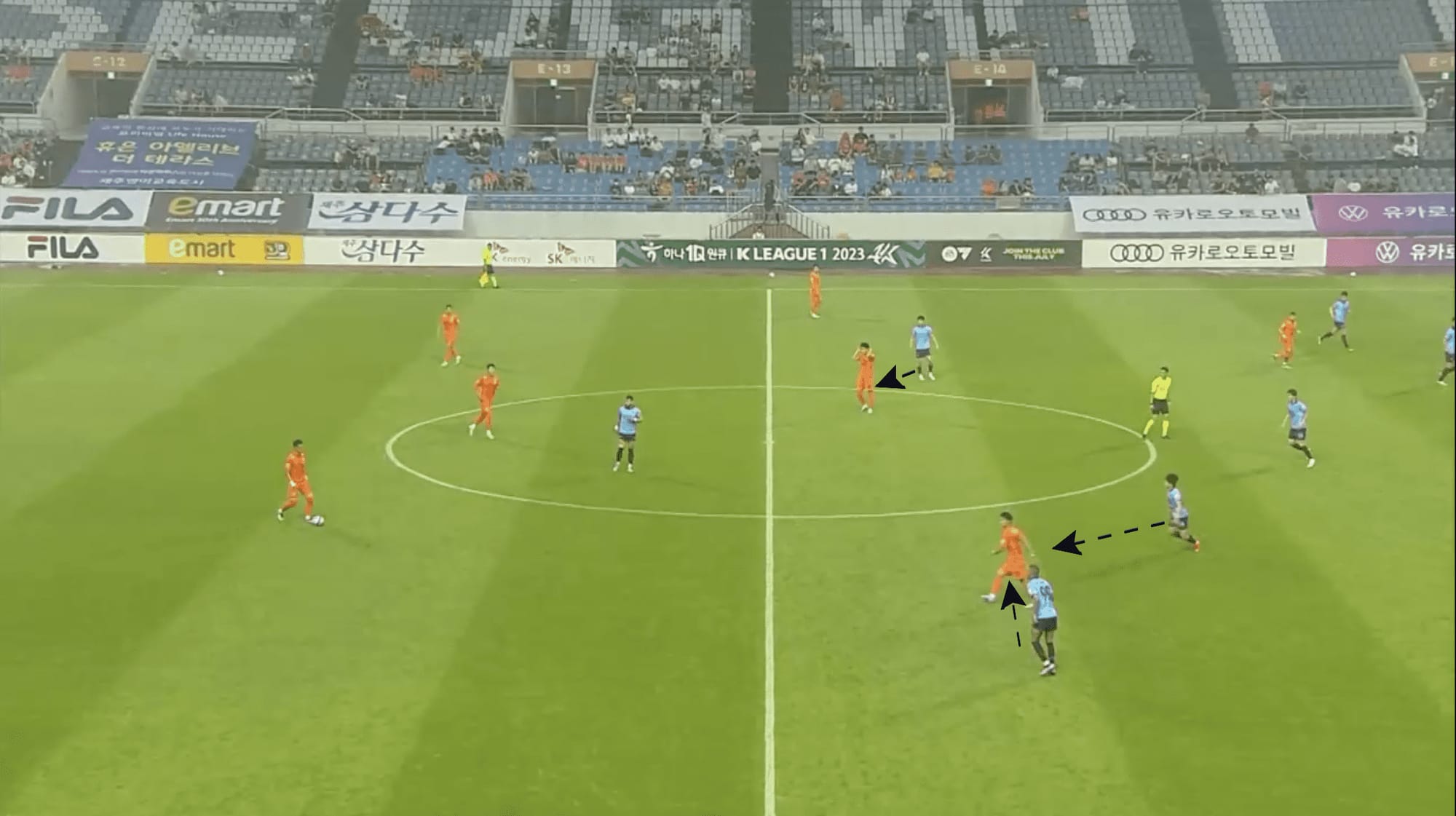
In the wide areas, the centre-backs engage in the same behaviour as they do in the centre, with the centre-backs advancing forward to cover passing options between the lines of the midfield and the defence, once again preventing overloads. This can be seen in the image below, with the right centre-back Kim Jin-Hyuk advancing forward to cover the opposition player in the wide areas, with the right midfielder, Go Jae-Hyeon, able to prevent a pass to the opposition player from the front.
What is also important to note in this example is how the right wing-back Jang Seong-Won also looks to quickly advance forward to be able to have access to press the opposition left wing-back. As a result of this, Daegu are able to maintain a 3v2 advantage over the opponent in the wide areas, making progression difficult for the opposition.
What is also a notable strength of the side is the fact that in this particular situation, Jang’s movement forward is not particularly necessary in stopping progression down the left-hand side, as the positioning of Go means that he would still be able to effectively cover the opposition wing-back if he were to receive the ball, as Kim would still be able to provide adequate cover behind him.
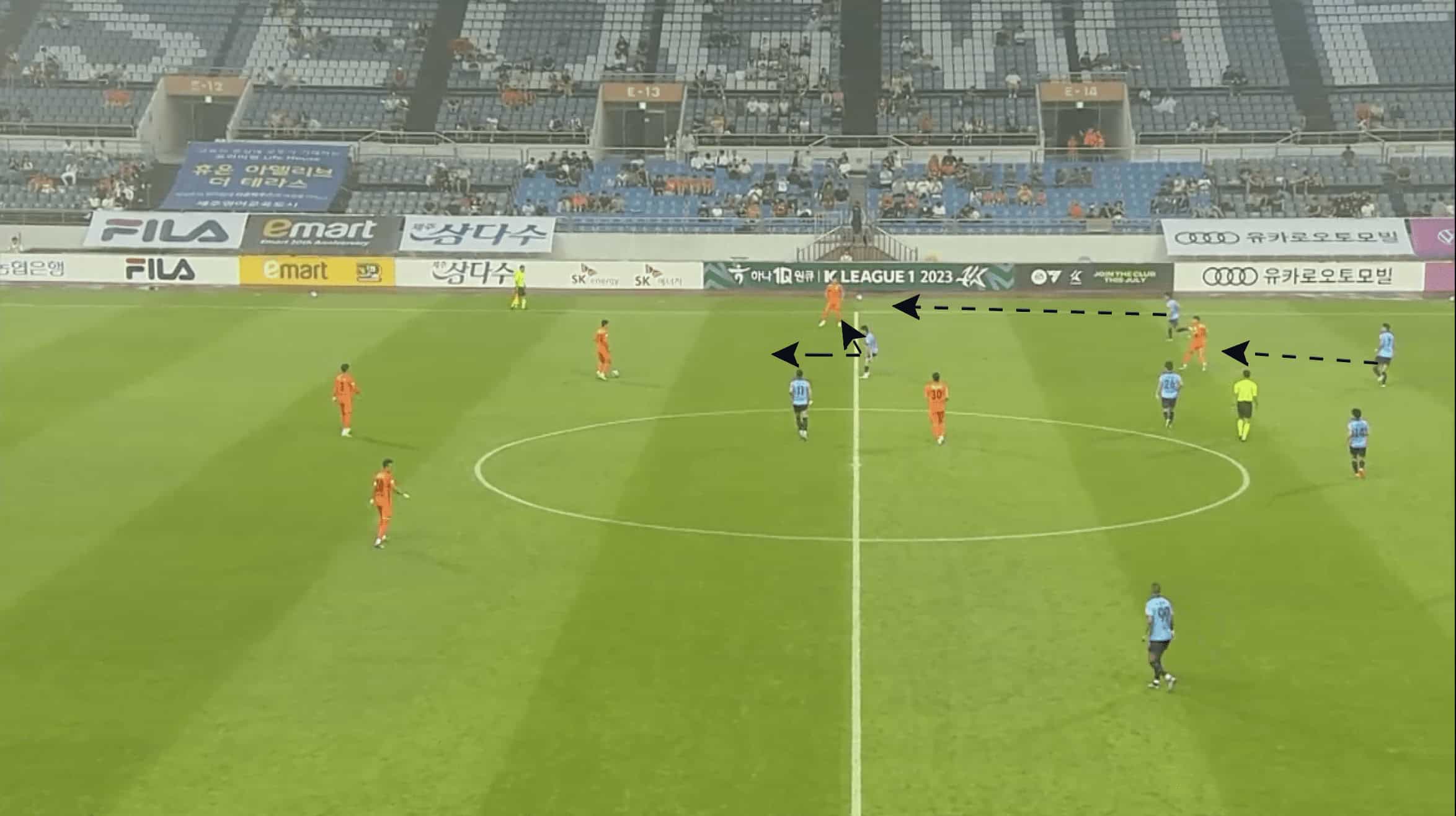
Even when Daegu choose to set up in a 5-3-2, the intention of the side to force the opposition to the wide areas can still be seen. The example below once again shows Kim in a position where he can cover the opposition player between the lines, which prevents the opposition from being able to overload Go in the centre of midfield.
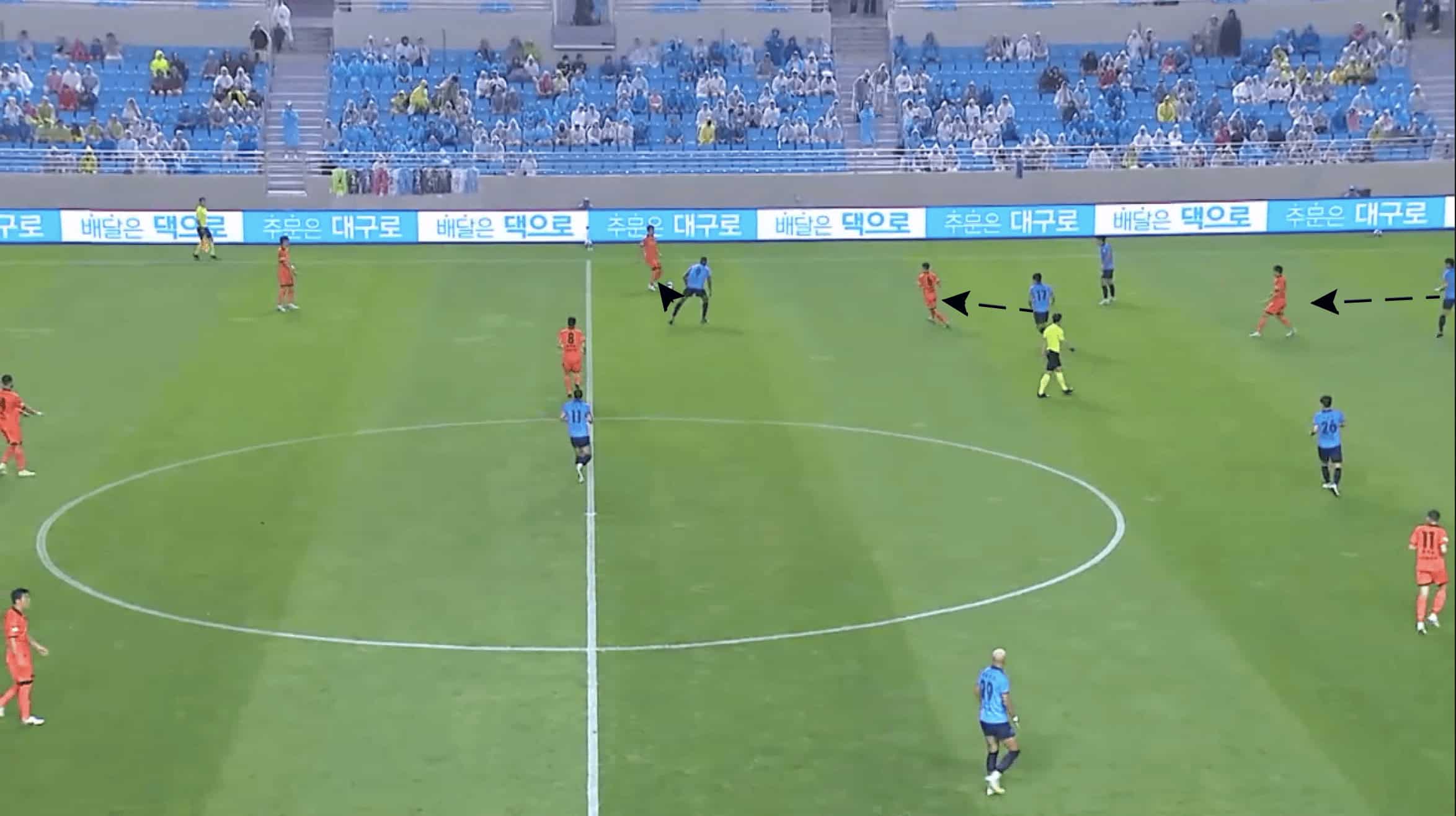
An additional aspect of Daegu’s defence is how the two midfielders in the side shift to the wide areas. This can be seen in the image below, with the second defensive line of the side becoming diagonal.
This has the effect of pinching the space between the defensive and midfield line, creating less central space for the opposition to access, as well as putting the midfielders in a better position to challenge for second balls if the opposition look to play a long ball.
As a result, a larger space is created in front of the two midfielders. From the manager’s perspective, Choi, this may be deemed a more accessible space to defend.
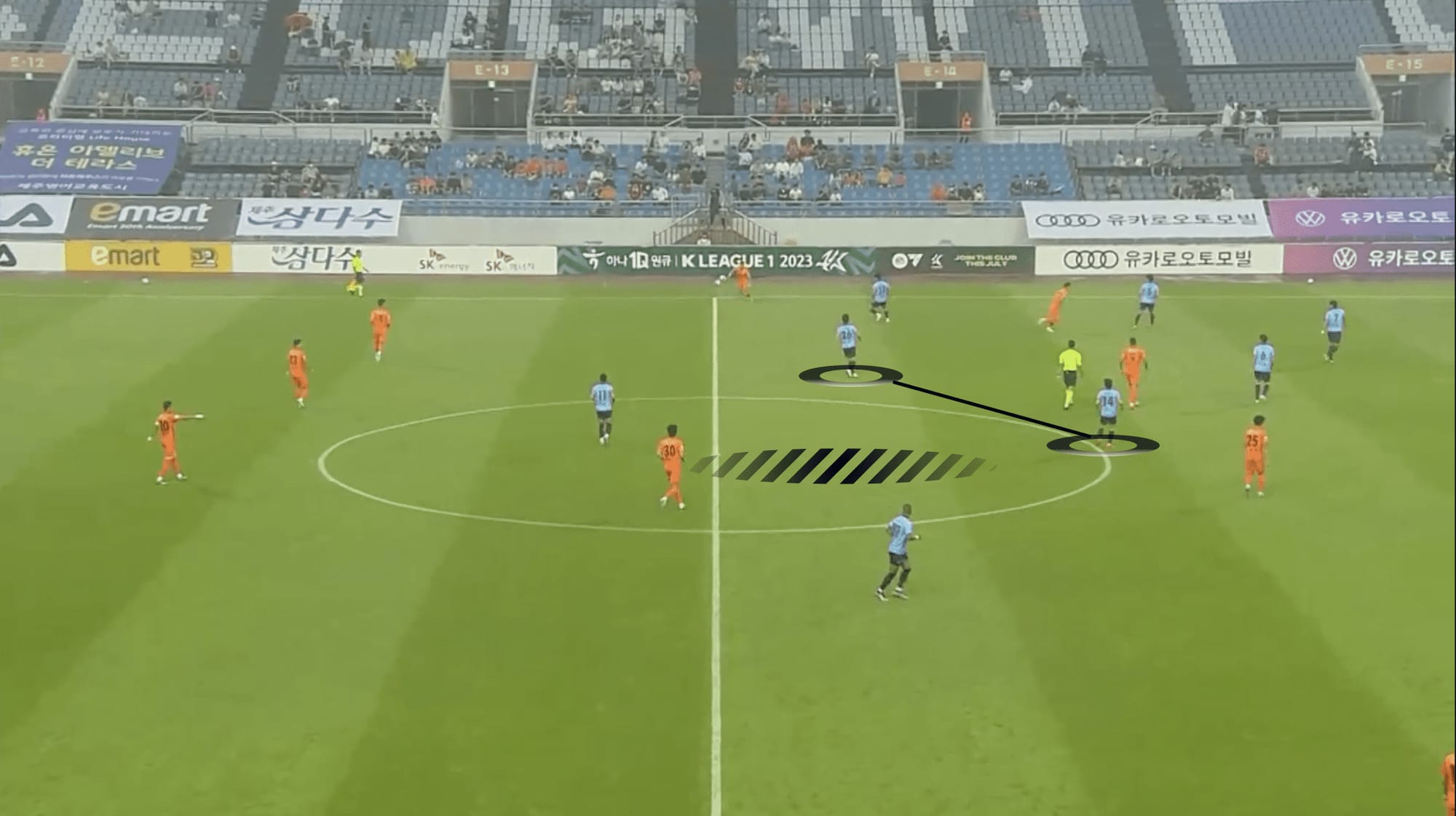
Another aspect that the side also particularly excel in is their ability to defend switches. The image below shows an example of the side once again being able to neutralise the wide threat, with Daegu having a 3v2 advantage over the opposition. What allows the side to be able to defend the switch is the number of players on the ball-far side that will be able to press the opposition and either prevent ball progression or slow it down, with the side having four players on the far side that would be able to do this.
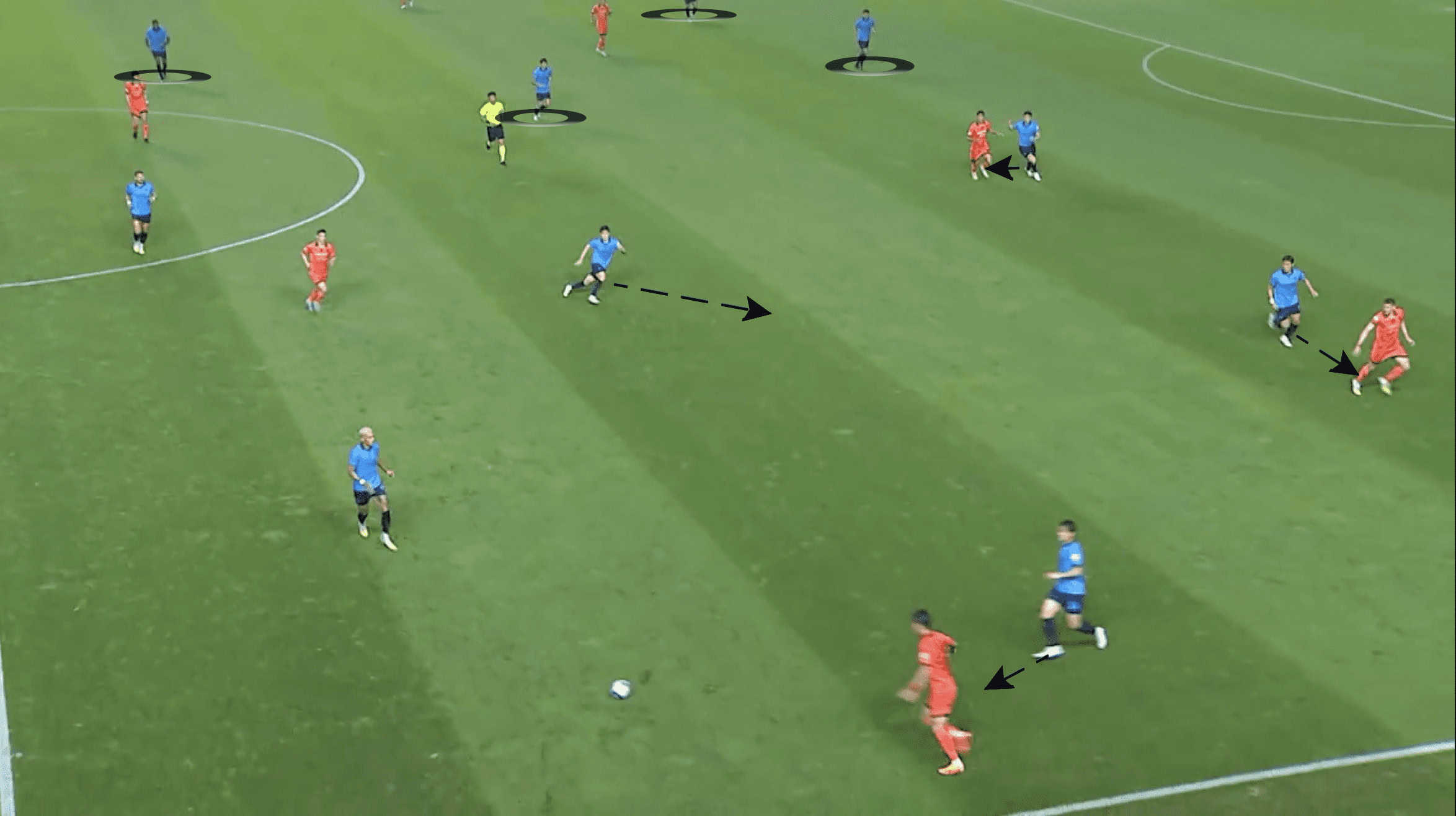
Potential defensive weaknesses.
Although the Daegu are geared towards forcing the opposition wide and are formidable in defending the wide areas as well as switches of play, there are few areas of the side’s approach that opposition teams can look to exploit. One of these is the distance between the side’s first and second lines of defence, as seen in the image below.
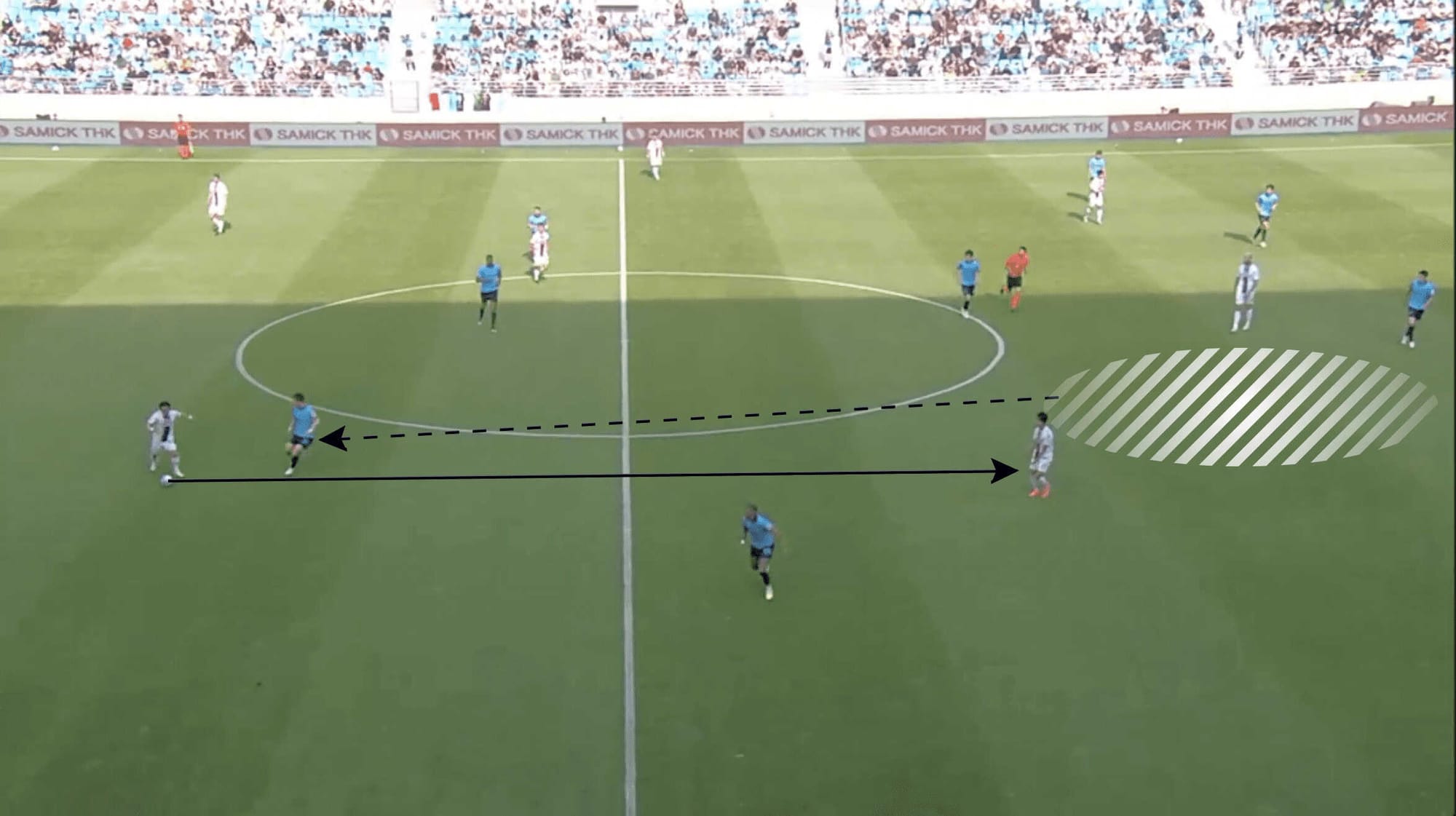
Due to this distance, the midfield players in the side have a relatively large distance to cover to apply meaningful pressure on the pass recipient. Even through early movement as a result of quick anticipation, this distance does not allow the midfield players to challenge for the ball. As stated earlier, Daegu use their centre-backs in order to neutralise midfield overloads.
However, when their midfielders push up to press opposition players in the midfield, space is created behind the midfielders. Subsequently, not only is the space created, but the side become more susceptible to being overloaded in the centre.
With their centre-backs heavily involved in jumping out of their line in order to cover opposition players in between the midfield and defensive line, space could also be created in the last line of defence.
Issues in attacking transition
Part of Daegu’s issues in attacking transition is, to an extent, no fault of their own. In a number of their games, the sides they face do not commit many players forward when in possession. Whilst this aids the side from a defensive perspective and means that the weaknesses discussed in the previous section are not taken advantage of, attacking transitions are more difficult to take advantage of.
This issue is exacerbated by players’ lack of forward movement when possession is regained. This can be seen in the image below, where after Go wins the ball in the midfield, none of the players in the vicinity of the midfielder look to advance into the space ahead, with only the furthest forward player, Edgar da Silva making moving into the space ahead. As a result of this, the only pass that Go could play was a ball over the top.
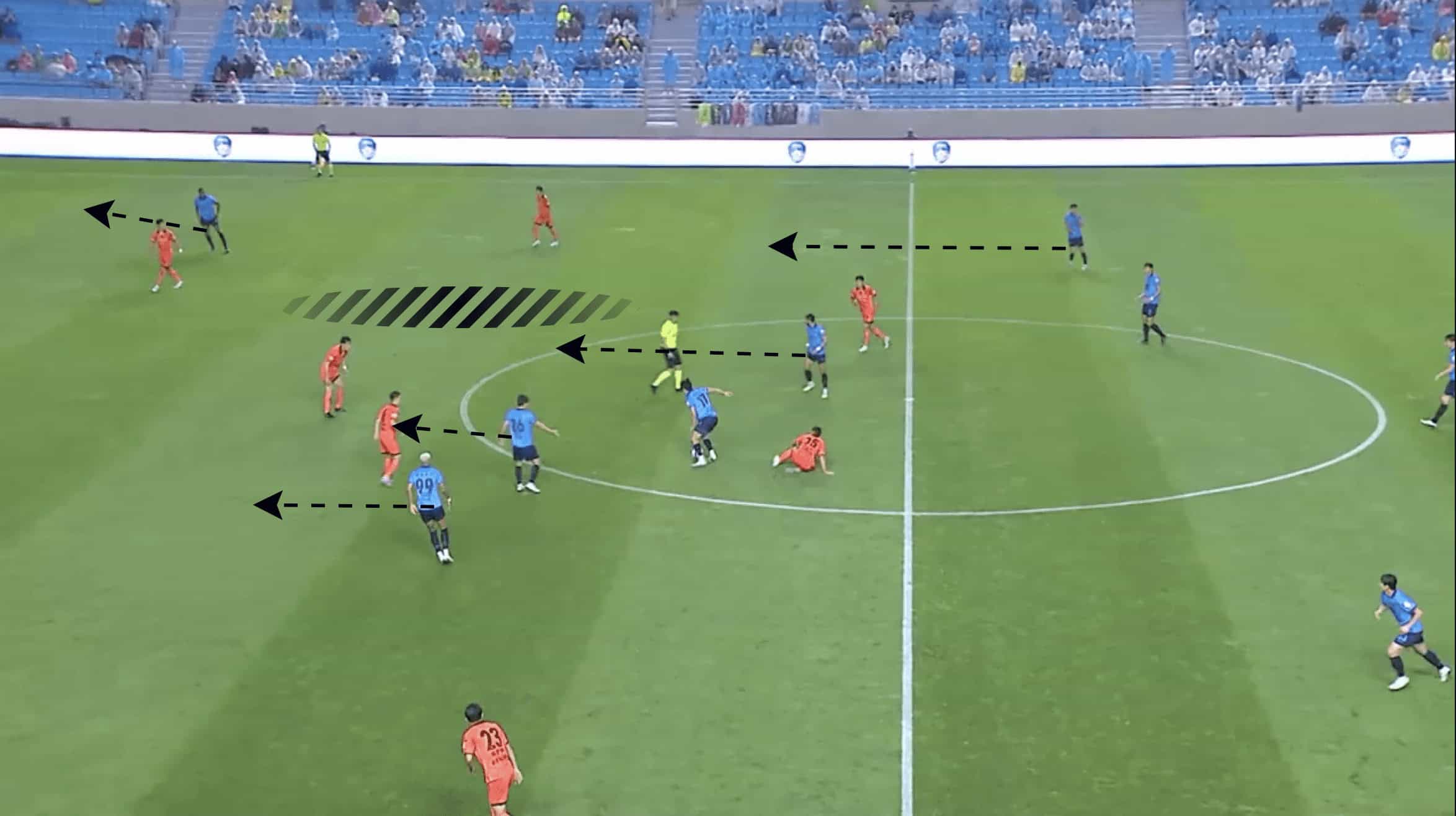
Conclusion
Due to the average age of the side as well as the age of the manager, the word inexperienced may come to mind when first viewing this Daegu side. However, when analysing the defensive performance of the side, this assertion can quickly be discarded.
The players on their side have a deep understanding of their roles as well as being able to interpret different risks and adjust accordingly. With the young talent in the side as well as a few experienced professionals under Choi, Daegu can rise further up the table in future campaigns and perhaps provide a platform for young players to follow in the path of former Napoli and current Bundesliga centre-back Kim Min-jae.





Comments